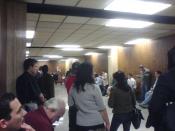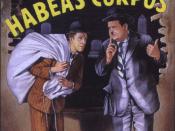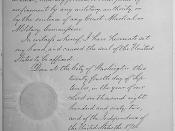Sheppard v. Maxwell, Warden
3S4 U.S. 333, S6 S.Ct. 1507, 16 L.Ed.2d 600 (1966)
Facts: July 4, 1954, Marilyn Sheppard was murdered in an upstairs bedroom in her home. Sam Sheppard, her husband, a prominent man in Bay Village, Ohio, was sleeping downstairs when the incident occurred, and was woken when he heard a noise. He went upstairs to investigate, and was knocked unconscious. He heard another noise and went back downstairs to check on it. He saw something, and chased it, fought with it, and was again knocked unconscious. When he regained consciousness for the second time, he called his friends and they came over and called the police. Many headlines circulated the front pages of the Cleveland newspapers. It seemed to be that the authorities were going easy on Sheppard because he was socially prominent The school gymnasium where the inquest took place was filled with reporters, television cameras, radio technicians, and hundreds of spectators.
At one point, the Coroner ejected Sheppard's counsel. Sheppard was arrested and the trial began two weeks before the November general election, where both the trial judge and the chief prosecutor were up for re-election. The jurors were not sequestered, but permitted to go home. The courtroom was so crowded with reporters, there was a lot of confusion and it was hard for the witnesses and counsel to be heard. Sheppard was found guilty and his appeals to the state courts of appeal, as well as the Supreme Court, were denied. In 1965, Sheppard hired F. Lee Bailey, who decided to institute a writ of habeas corpus.
Question: Was Sheppard denied due process of law by the editorials published by the Cleveland newspapers and the unsequestered jury of the Cleveland courts?
Held: Yes, Sheppard was denied due process of law by the...


